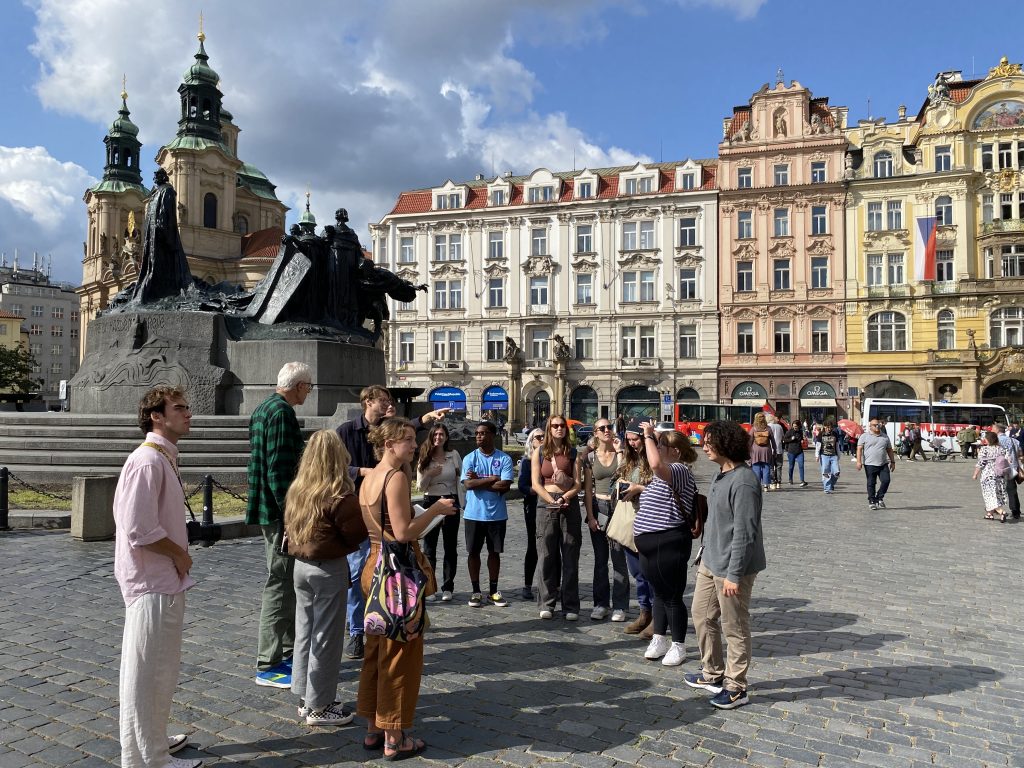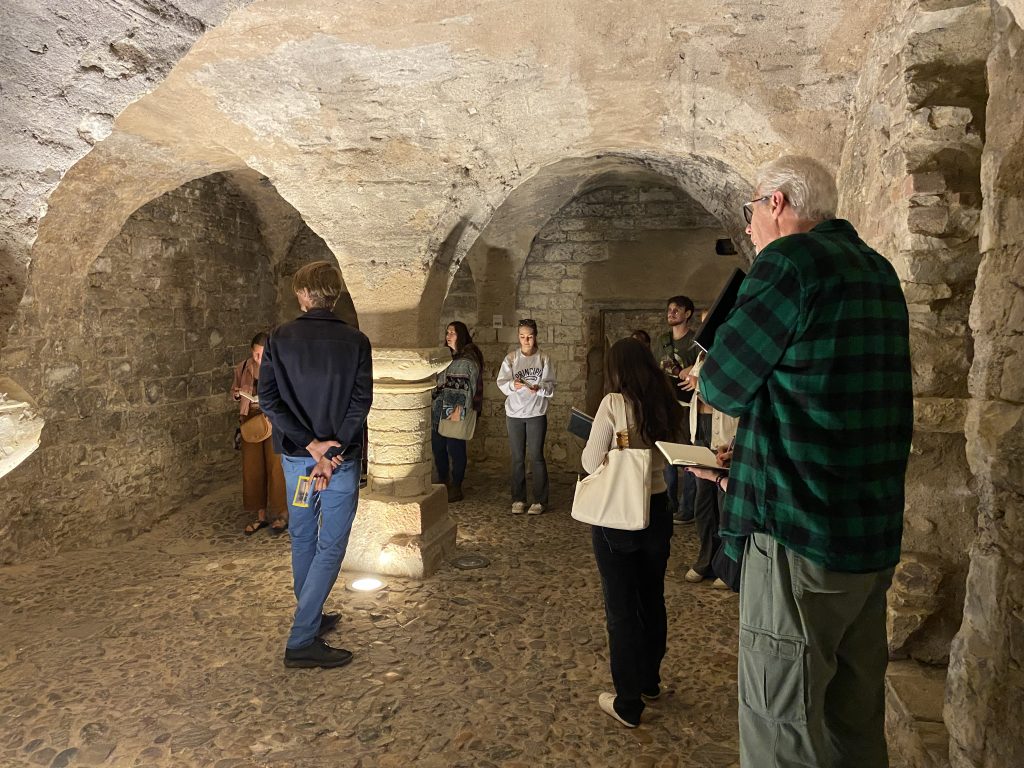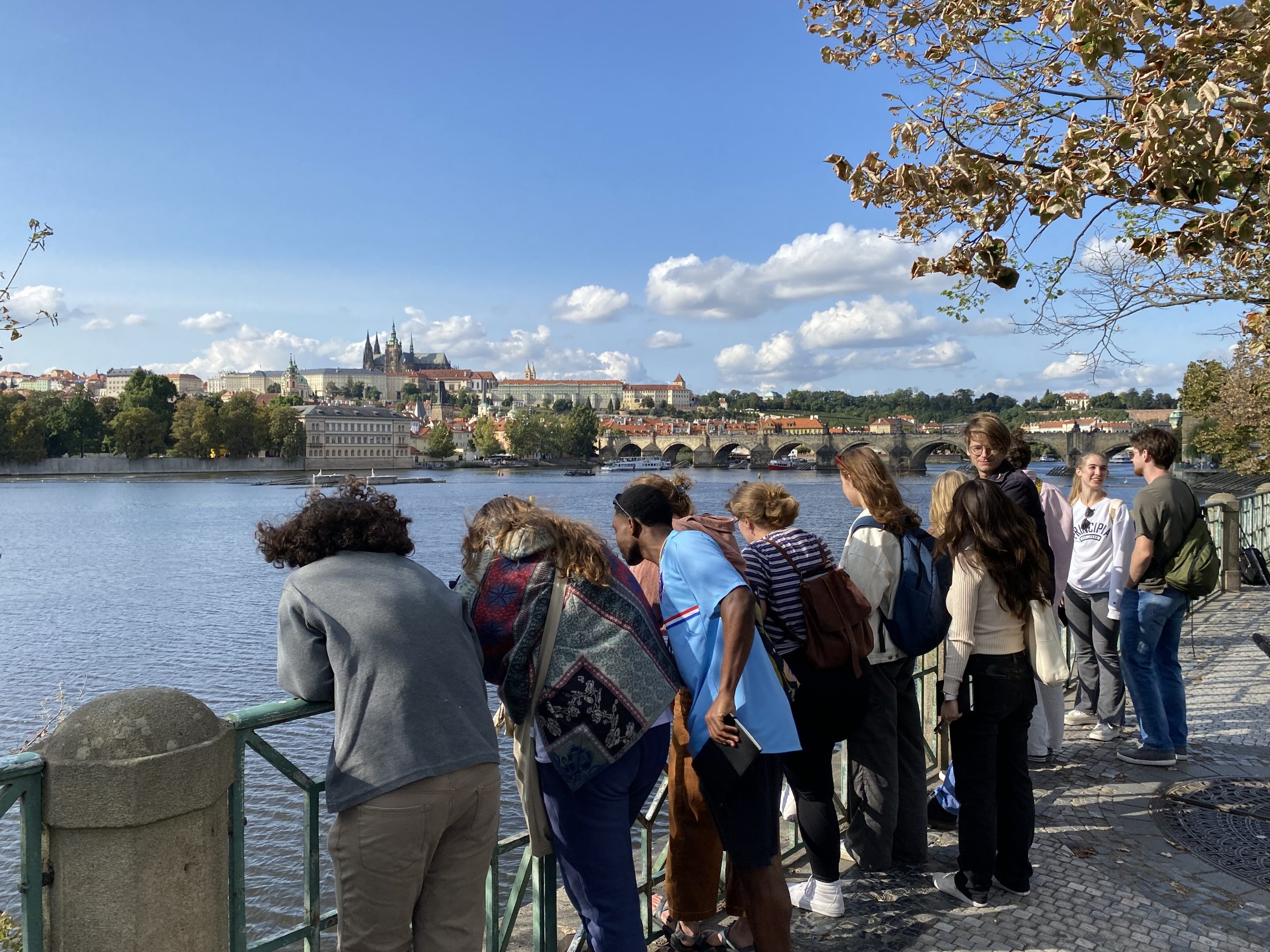This afternoon we met architect Krištof Hanslík in Old Town Square for an architecture tour of Prague’s Old Town. The Rococo building to the left is the Kinsky Palace (16th Century CE). The Gothic church behind it is the Church of Our Lady before Tyn (14th Century CE).

“We are going to begin in the past and come to the present,” Hanslík told the group. “Then we will go back to the past.”
The past began with a map.

On the map, Hanslík pointed out the key geographical features that shaped the locations of the earliest human settlements in Prague in the 11th Century CE: the hill (for the castle) and the river (for transport). At the foot of the hill and across the river there was a marketplace, which evolved into the Old Town Square.
Pictured below is the monument to Jan Hus. Behind Jan Hus is the surviving spire of city hall, famous for its astronomical clock.


Off in the background behind the statue of Jan Hus is the baroque St. Nicholas’ Church, built by the Hussites in the 12th Century CE to “show off.”

A short walk east and we come to a smaller square made up of the Klementinum (National Library), the Municipal Library, and the New Town Hall, built by the Jesuits in the 16th Century CE during the Counter Reformation. Pictured below is the Municipal Library.


And here is the entrance to the Klementinum library and university (not pictured: the gold inside). The Klementinum became one of the earliest centers for astronomical studies in Prague. “Instead of practicing religion,” Hanslík said of the Jesuits, “they started practicing science.”

From there we walked to the House of the Lords of Kunštát and Poděbrady to see the underground foundations of a beautifully preserved Romanesque palace (13th Century CE).



From there, we walked to the Bethlehem Chapel, where Jan Hus preached and initiated the Bohemian Reformation (preceding Protestantism). Built in the 14th Century CE and restored in the 19th Century.


Next up: the Rotunda of the Finding of the Holy Cross, a Romanesque church from the 12th Century, one of the earliest buildings in Prague.

From there we walked to the river to look at the castle complex. The earliest buildings of Prague Castle date back to the 9th Century CE. Since then, successive rulers have added buildings, layers, and extensions, resulting in an ever-changing castle that blends the styles of Gothic, Renaissance, Romanesque, and baroque architecture.




Next, we walked to the National Theater, built in the 19th Century in a Neo-Renaissance style.


Here, the new stage of the National Theatre, built in the 80s.


On National Street, outside the National Theater, we observed some of Prague’s famous Cubist buildings.

Our last stop was the rooftop of the new Center for Technology.




Then, dinner at Cafe Louvre, famous hangout for the likes of Franz Kafka, Karel Čapek, Albert Einstein, and others.



Leave a Reply